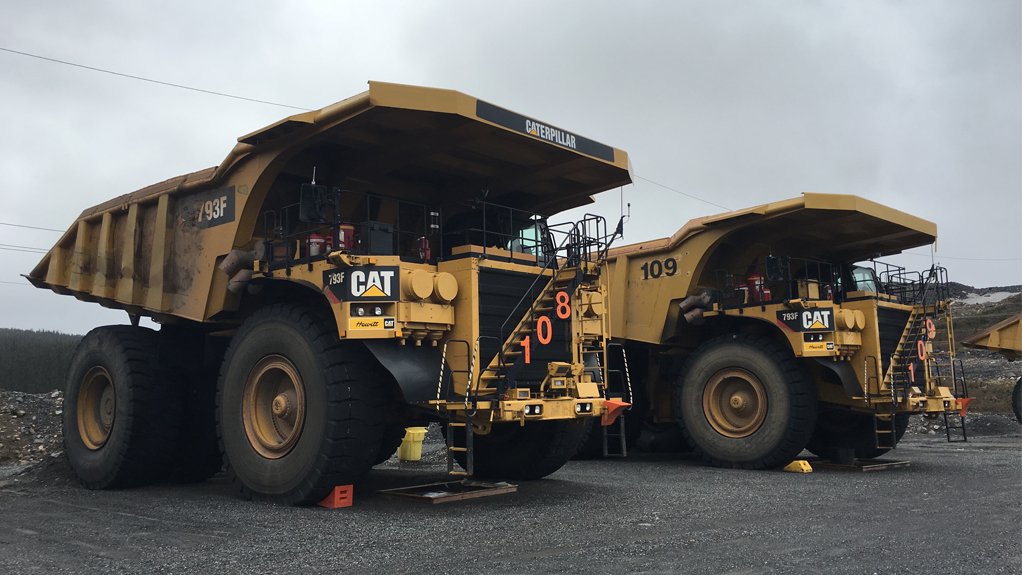VANCOUVER (miningweekly.com) – A feasibility study (FS) completed on ASX- and TSX-listed Champion Iron Ore’s Bloom Lake mine, in north-eastern Quebec, has demonstrated a financially viable and competitive project in current global markets.
“This is a major result for the company. Based on conservative assumptions, the FS demonstrates that the Bloom Lake iron-ore mine is clearly viable. In fact, very few iron-ore projects offer the potential of [more than] 20 years of production at industry-low operating costs, while being strategically located in close proximity to all necessary infrastructure and situated in what we consider to be a superior mining jurisdiction,” chairperson and CEO Michael O’Keeffe said on Thursday.
Champion subsidiary Quebec Iron Ore last year bought the Bloom Lake assets and the Quinto claims, located opposite its Fire Lake iron-ore project, in the famous high-grade Labrador Trough mining district, straddling the provincial borders of Newfoundland and Quebec, from Cliffs Natural Resources for C$10.5-million.
Taking advantage of existing infrastructure, the FS estimates that the operation can restart with total capital investment of C$326.8-million, which includes mine upgrade costs of C$157.2-million.
The study has calculated an after-tax net present value, at an 8% discount rate, of C$984-million and an after-tax internal rate of return of 33.3%. The mine will produce net after-tax cash flow of C$2.3-billion, including all forecast capital expenditure.
The operation will produce concentrate at an average rate of 7.4-million tonnes a year. The concentrate, at 66.2% iron content, is obtained with an expected metallurgical recovery that averages 83.3% iron relative to plant feed at the 30% iron average feed grade.
Champion said plant and processing upgrades are expected to deliver improvements in iron recovery. The upgraded recovery circuit flowsheet replaces the existing three-stage spiral circuit with a new gravity circuit that limits the recirculating process streams and reduces the chance of losses of iron to the rougher stage tailings. A magnetic scavenging circuit will also improve the recovery of additional iron minerals.
Over the 21-year mine life, the average operating cost of production has been calculated at $44.62 per dry metric tonne (dmt), free-on-board port Sept-Iles. The life-of-mine average iron-ore price for 66.2% iron cost-and-freight China (62% iron index plus premium for extra iron content) has been pegged at $78.40/t, provided by a market study by economics consultancy Metalytics.
The operation comprises a conventional surface mining method using an owner-mining approach, with electric hydraulic shovels and mine trucks. All major mine equipment required for the restart of Bloom Lake is present on site.
Bloom Lake has a compliant proven and probable mineral reserve estimated at 411.7-million tonnes grading 30% iron, based on a cutoff grade of 15%. The mineral resource at a cutoff grade of 15% iron, inside an optimised openpit shell based on a long-term iron price of $60/dmt concentrate for 66% iron content, is estimated at 911.6-million tonnes in the measured and indicated categories, with an average grade of 29.7% iron, and the inferred mineral resource stood at 80.4-million tonnes with an average grade of 25.6% iron.
Champion’s TSX-listed stock rose about 7% on Thursday following the news release, to trade at C$1.39 apiece.
Edited by: Chanel de Bruyn
Creamer Media Senior Deputy Editor Online
EMAIL THIS ARTICLE SAVE THIS ARTICLE
ARTICLE ENQUIRY
To subscribe email subscriptions@creamermedia.co.za or click here
To advertise email advertising@creamermedia.co.za or click here













